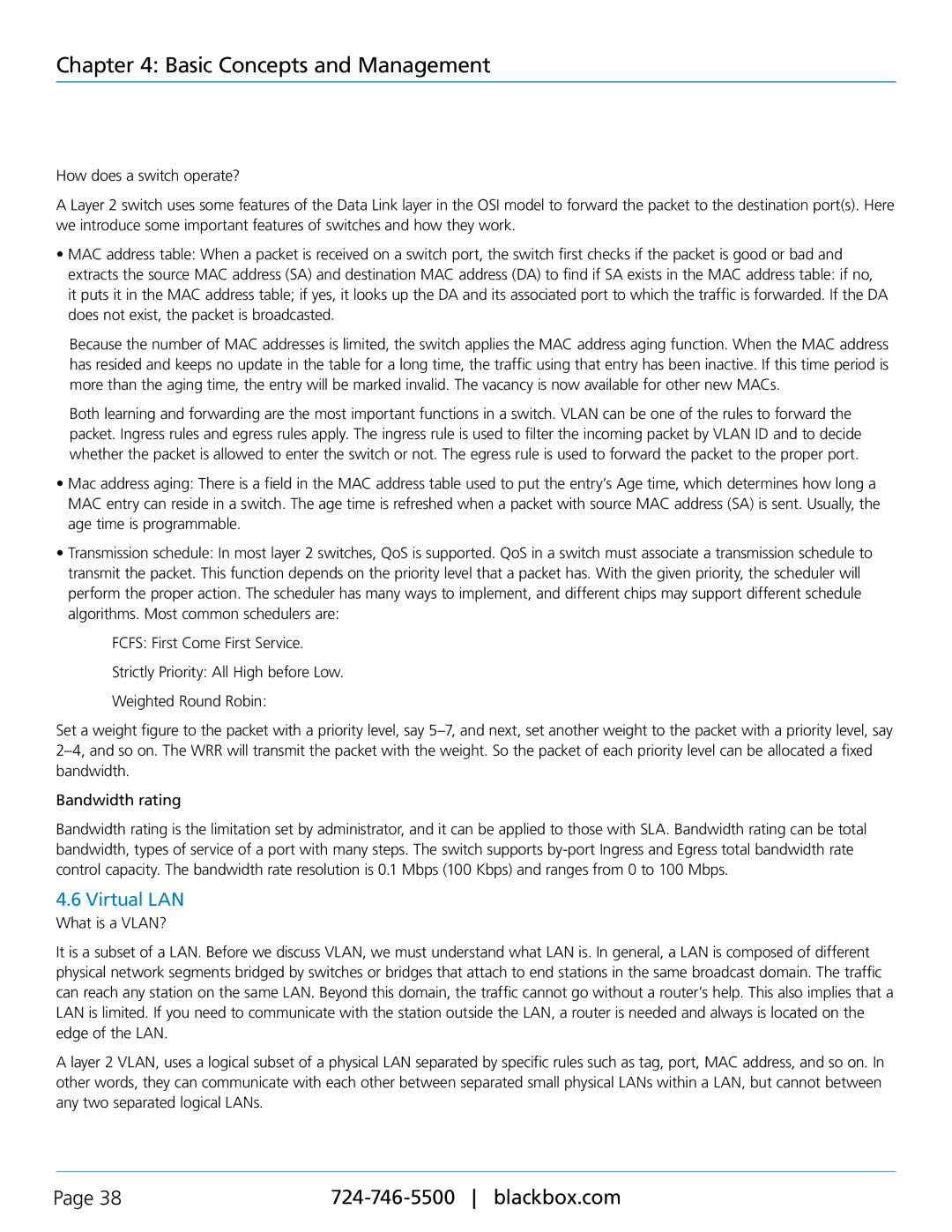
Chapter 4: Basic Concepts and Management
How does a switch operate?
A Layer 2 switch uses some features of the Data Link layer in the OSI model to forward the packet to the destination port(s). Here we introduce some important features of switches and how they work.
•MAC address table: When a packet is received on a switch port, the switch first checks if the packet is good or bad and
extracts the source MAC address (SA) and destination MAC address (DA) to find if SA exists in the MAC address table: if no, it puts it in the MAC address table; if yes, it looks up the DA and its associated port to which the traffic is forwarded. If the DA does not exist, the packet is broadcasted.
Because the number of MAC addresses is limited, the switch applies the MAC address aging function. When the MAC address has resided and keeps no update in the table for a long time, the traffic using that entry has been inactive. If this time period is more than the aging time, the entry will be marked invalid. The vacancy is now available for other new MACs.
Both learning and forwarding are the most important functions in a switch. VLAN can be one of the rules to forward the packet. Ingress rules and egress rules apply. The ingress rule is used to filter the incoming packet by VLAN ID and to decide whether the packet is allowed to enter the switch or not. The egress rule is used to forward the packet to the proper port.
•Mac address aging: There is a field in the MAC address table used to put the entry’s Age time, which determines how long a MAC entry can reside in a switch. The age time is refreshed when a packet with source MAC address (SA) is sent. Usually, the age time is programmable.
•Transmission schedule: In most layer 2 switches, QoS is supported. QoS in a switch must associate a transmission schedule to transmit the packet. This function depends on the priority level that a packet has. With the given priority, the scheduler will perform the proper action. The scheduler has many ways to implement, and different chips may support different schedule algorithms. Most common schedulers are:
FCFS: First Come First Service.
Strictly Priority: All High before Low.
Weighted Round Robin:
Set a weight figure to the packet with a priority level, say
Bandwidth rating
Bandwidth rating is the limitation set by administrator, and it can be applied to those with SLA. Bandwidth rating can be total bandwidth, types of service of a port with many steps. The switch supports
4.6 Virtual LAN
What is a VLAN?
It is a subset of a LAN. Before we discuss VLAN, we must understand what LAN is. In general, a LAN is composed of different physical network segments bridged by switches or bridges that attach to end stations in the same broadcast domain. The traffic can reach any station on the same LAN. Beyond this domain, the traffic cannot go without a router’s help. This also implies that a LAN is limited. If you need to communicate with the station outside the LAN, a router is needed and always is located on the edge of the LAN.
A layer 2 VLAN, uses a logical subset of a physical LAN separated by specific rules such as tag, port, MAC address, and so on. In other words, they can communicate with each other between separated small physical LANs within a LAN, but cannot between any two separated logical LANs.
Page 38 |
